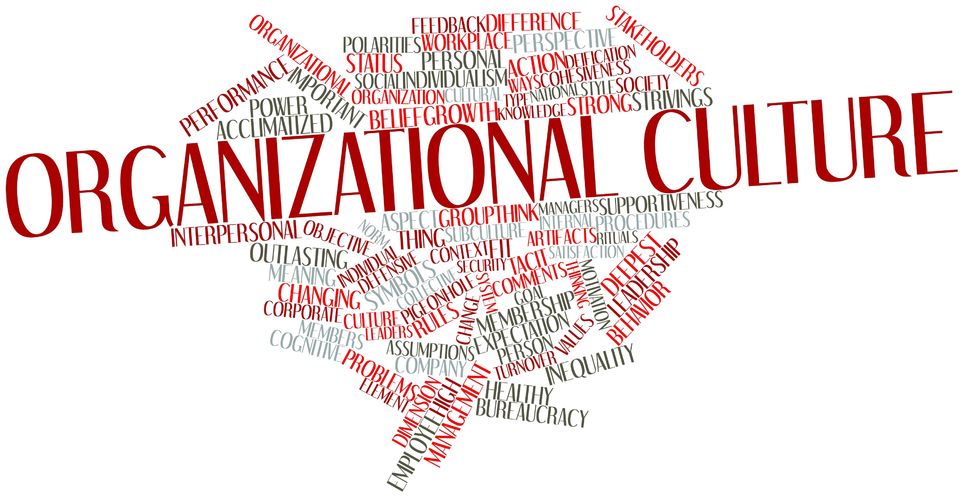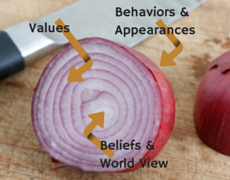Guiding the Invisible

Years ago, I worked with a client organization that demonstrated two fantastic qualities: high dedication to their mission and long staff tenures.
They also demonstrated two negative qualities: chronic, low level conflicts and management avoidance of problem behavior within staff.
A year or so later, I was hired by a different department within the same organization. This department was completely different, in terms of the nature of its work; however, it shared identical positive and negative qualities.
Shortly after the completion of that project, I was called by a member of the executive team of the same organization. They needed help. The team was very dedicated to their mission, and the team members each had extraordinarily long tenure. However, they were chronically dealing with low level conflicts. And they had a difficult time addressing problem behaviors.
Notice the theme? This is organizational culture.
It can be a source of tremendous strength in your organization. It can also be a source of conflict and challenges.
What is Organizational Culture?
An onion is a helpful metaphor when describing organizational culture:
 Behaviors: The first, outer layer of the onion represents observable behaviors: the way people dress, talk, etc.
Behaviors: The first, outer layer of the onion represents observable behaviors: the way people dress, talk, etc.
Values: The second, middle layer of the onion represents values. In this “layer”, we’re talking about the actual gut-level values of an organization; not necessarily the same values that they have written on the walls and websites.
Beliefs and World View: This third, deepest layer of the onion has to do with how people see and understand the world and their place in it. I heard someone recently describe this as people’s “Truth Box.” These are deep truths that people have internalized and don’t even consciously think about.
Culture is most often created by and reflective of the personal beliefs and behaviors of core leadership.
In an organization run by founders or a strong leader with long tenure, it’s common to feel like you’ve ‘met’ the leader(s) before actually meeting them in person. In older organizations, or organizations with leadership turnover, there is still a tendency for mid and lower level leaders to shape cultures within their spheres of influence. If there is no unifying effort, the organization will not be aligned and will be experienced as interdepartmental rivalries or apathy.
Culture starts to get imbedded into the structure of the organization with policies and procedures. It is also shaped by hiring practices. People tend to hire people who are like them – or – who seem like a good “fit” for the organization. It’s the “Birds of a feather….” effect.
Recognizing your Organizational Culture
It is extremely difficult to see your culture. It takes reflectiveness and insight.
- Deep beliefs and values are not best demonstrated when people are thinking about them; instead, they pop out when you aren’t thinking about them. Often, this is during times of stress, opportunity or ‘lazy’ times when outside events aren’t guiding internal activity.
- Watching for trends in behaviors, approaches, conversations (or lack thereof) can provide insight into the reality of what is believed and valued in your organization.
Resources for Understanding Culture
- Outside relationships (venders, customers, partners) can provide insight into how they view the people in your organization.
- Observing trends in behavior and choices among others in your organization is a great way to gain insights.
- New hires are also a source of perspective. They are in the process of learning the culture themselves. They may or may not feel comfortable describing how they experience this new organization; but asking them about the typical challenges they face may provide insight.
- Lastly, an Outside Consultant can often provide the fastest and most unbiased perspective on your culture. Find a neutral third party that works with many different organizations. They should be able to easily identify what makes your culture unique and how it relates to your ability to perform and succeed.
What to Look For
I find it helpful to observe and note the following:
- How Power is shared. This includes how decisions are made and how and what information is shared.
- How Purpose is defined and understood. This includes how and what kind of goals are set, how are they pursued, and how well everyone in the organization shares a sense of purpose or contribution to goals.
- How People are treated. Are accomplishments or milestones celebrated? In what way? How are mistakes or poor performance addressed? Do people seem valued? Who seems to be more important: staff or customers? Leaders or staff?
How do you guide and shape culture?
Cultural formation and leadership takes focus, consistency and time.
To shape culture, a leader or leadership team needs to begin with an honest assessment of themselves:
- What are our core beliefs that define our sense of purpose and value?
- What are those values? What about the “ignoble” values that we wrestle with?
- For example, do I value praise and respect so highly that I resent anyone who seems to be getting it undeservedly?
- How are my (our) core beliefs and values manifested in my behavior? How do they inform how I relate to stress, conflict, high-stakes decisions, other people, annoyances, success, etc?
Once you are clear on your own motivations and tendencies, determine if you are happy with what you see. Are there changes that you need or want to make personally or as a leadership team? If so, the very act of engaging in those changes will have ripple effects within your organization.
Once you’ve identified the ideal values of the organization:
Define the kind of behaviors these values should produce: How do these values inform decision making? How people are related to? How specific, common situations are handled?
- Identify what kind of structure and support is needed to support and produce these behaviors across the organization. This usually includes:
- How new hires or promotions are selected
- How people are oriented and trained
- Procedures (how things are done)
- Policies (what should be done)
- Communicate these values and behaviors: this needs to happen consistently. The best organizations are always focusing on the culture aspects that make them unique and strong. They are always talking about ‘why’ something is done.
- Celebrate these values and behaviors: regularly find ways to acknowledge (privately and publicly) people who act in ways that best demonstrate the ideal culture.
Are there tendencies in your organization that might benefit from change? What is the next step that you need to take to begin that process?
For additional information and how we can help you grow your organization, enjoy your work and accomplish dramatic results CONTACT US
Categories
Get Christian’s Newest Book: Train to Lead

Download my free 10-page eBook:
How To Accomplish More Without Doing More:
Eight Proven Strategies To Change Your Life
Discover how to save eight hours during your workweek-even if you're too busy to even think about it. The resource every maxed out executive needs.